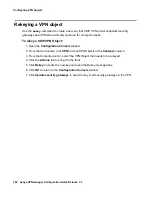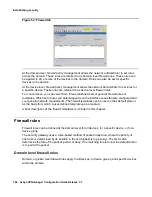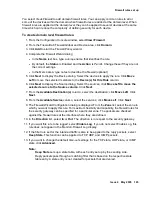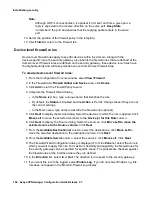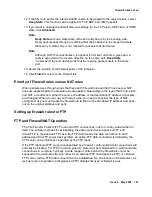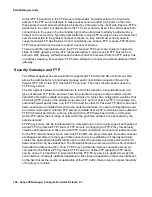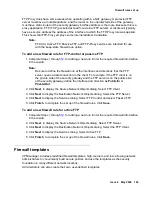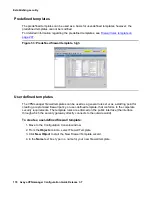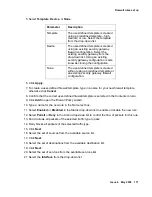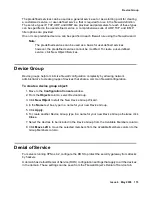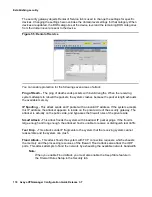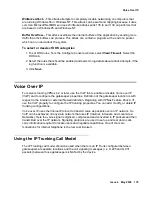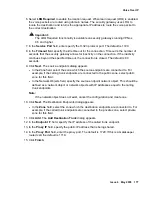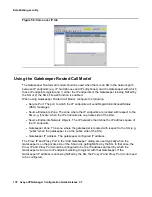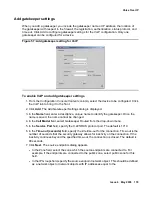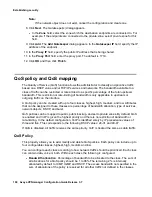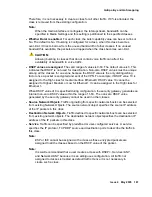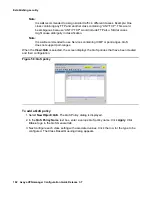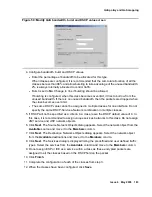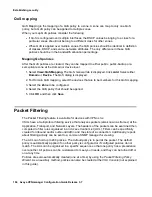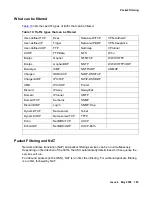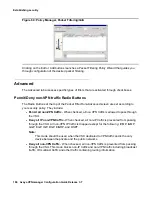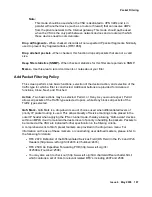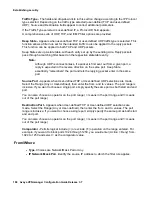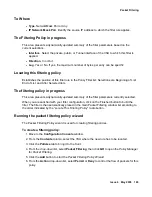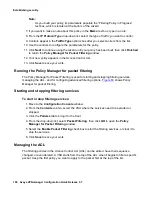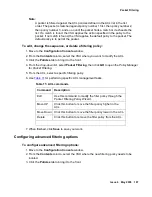
Establishing security
176 Avaya VPNmanager Configuration Guide Release 3.7
When using the IP Trunking Call Model, configure the following:
●
Service Port. The port to which the gatekeeper sends call-signaling messages.
●
Source Trunk Zone. The zone where the gatekeeper is located with respect to the SG (e.g.
“private” when the gatekeeper is on private side of the SG).
●
Source Trunk Network Objects. The IP networks that define the IP address space of the
gatekeeper.
●
Destination Trunk Zone. The zone where the gatekeeper receiving call-signaling
messages is located with respect to the SG (e.g. “public” when the receiving gatekeeper is
on the public side of the SG).
●
Trunk IP address. The receiving gatekeeper configured IP address.
The Proxy IP and Proxy Port in the “Add Destination Trunk” dialog are used typically when the
Gatekeeper receiving call-signaling messages is on the private side of the SG and is getting
NATed by the SG. In that case, the Proxy IP and Proxy Port would be configured to be the IP
address and port by which the receiving Gatekeeper is known to the Gatekeeper wanting to
send call-signaling messages. If the receiving Gatekeeper is not being NATed by the SG, the
Proxy IP and Proxy Port should not be configured.
Using the LRQ Required checkbox of the IP Trunking Call Model
When a Gatekeeper of an IP Trunk is not pre-configured with translations to map phone
extensions to Gatekeepers, but rather uses Location Request (LRQ) and Location Confirm
(LCF) messages to determine the Gatekeeper to which call-signaling messages will be sent,
check the LRQ Required checkbox. This will direct the SG to translate the IP addresses and
ports embedded within LRQ messages sent by the Gatekeeper so that the receiver of those
LRQ messages will respond to the NATed address.
!
Important:
Important:
The LRQ functionality is available on Security Gateways running VPNos 4.6 and
higher.
To enable VoIP and add IP Trunking:
1. From the Configuration Console window, select View>Device. Click the VoIP tab to bring it
to the front.
2. Click Add. The VoIP Configuration dialog is displayed.
3. Select Enable to enable the VoIP Rule configuration.
4. In the Name field, enter a descriptive, unique name to identify the IP trunk.
5. In the Call Model field, select IP Trunking from the drop-down menu.
Summary of Contents for 3.7
Page 1: ...VPNmanager Configuration Guide Release 3 7 670 100 600 Issue 4 May 2005...
Page 4: ......
Page 20: ...Preface 20 Avaya VPNmanager Configuration Guide Release 3 7...
Page 32: ...Overview of implementation 32 Avaya VPNmanager Configuration Guide Release 3 7...
Page 53: ...Preferences Issue 4 May 2005 53 Figure 16 Tunnel End Point Policy...
Page 54: ...Using VPNmanager 54 Avaya VPNmanager Configuration Guide Release 3 7...
Page 244: ...Using advanced features 244 Avaya VPNmanager Configuration Guide Release 3 7...
Page 292: ...Upgrading firmware and licenses 292 Avaya VPNmanager Configuration Guide Release 3 7...

